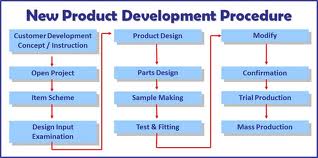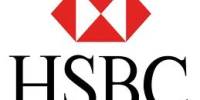New product development on Mix Masala in Meghna Group of Industries
We are Meghna Group of Industries, one of the leading business conglomerates of Bangladesh emerging in 1989 in the industrial park at Meghnaghat, Narayangonj district. Meghna Group of Industries (MGI) is one of the biggest & leading conglomerates of Bangladesh. With a turnover of USD 2 billion & asset of USD 1 billion, MGI is currently operating in 32 companies, 30 Industries with more than 15000 employees, 3000 distributors & 1000 suppliers under its umbrella.
History –
The history of Meghna Group of Industries dates back to 1976 when its predecessor Kamal Trading Company was born. The group’s humble debut occurred with the inception of Meghna Vegetable Oil Industries Ltd in 1989 on a small chunk of land at Meghnaghat in Narayanganj.
Now, the group is running 30 Industrial units on over 350 acres of land. Meghna Group of Industries has been marketing various Fast Moving Consumer Goods (FMCG), Cement, Commodities, Chemical, Seed Crushing, Fish and Poultry feed, Power Plant, other bulk and industrial products under the brand name of ‘Fresh’, ‘No.1′ and ‘Pure’. Moreover, the group has Ship Building Dockyard, Shipping, Securities, General Insurance, Media, Aviation and many other businesses.
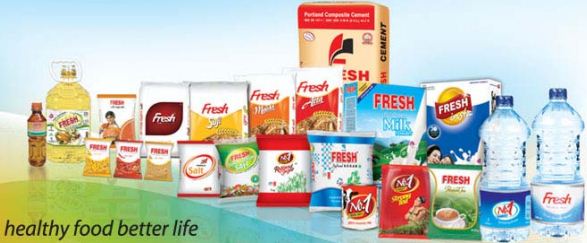
The Group brands and products:
MGI has started to spread its footprints outside Bangladesh, especially in the Middle East, Southeast Asia, Europe, North and South America through exporting its various products. Has more than 35 years of national & global experience. In Bangladesh one in every three households use MGI Products.
Growth of MGI – MGI has been very aggressive in its expansion plan & emerged as the largest investor in industrial development of Bangladesh for three consecutive years. Meghna Group’s ambitious business expansion is designed and driven by a visionary yet very humble person Mr. Mostafa Kamal. Mr. Mostafa Kamal is not only a far sighted entrepreneur but also known for his patriotism, contribution towards development of industrial, health, education, sports, social welfare and various other sectors. His philanthropy, honesty, sincerity and dedication fetched the group to today’s lofty achievements.
Contribution:
Meghna Group has already invested USD 1 Billion for setting up new lines of business and great expansion programs such as chemical complex, power, salt, seed crushing, cement and media.
Meghna Group has contributed almost 75 million US Dollars as Tax to the state exchequers in Fiscal year 2012‐2013.
Meghna Group of Industries is entirely a customer focused company and has set a new standard since its emergence. FRESH Spices is one of the products of FMCG Division having several variants such as Turmeric, Chili, and Coriander & Mix Spices.
New Product Development on Fresh Mix Masala
IDEA DEVELOPMENT PROCESS
The first step in any product development is of course the idea. It’s one thing to have an idea; it’s another is altogether to develop it. But once we have our idea well established, there are some important steps to pursue, including the design of a business plan framework which encompasses the development procedures, milestones to achieve, estimates of financial aid required, and an assessment of training needs.
To generate idea, we’ve conducted a qualitative research and our research objective was to understand the role and classification, need gaps, expectations, purchase dynamics of the spice category where consumers from different SEC responded.
From this research we’ve got clear picture that consumers shifting into the branded spice category as it liberates them to enjoy modern lifestyle. However category is moving along with the consumers towards convenience. And there is potential for ready‐mix spices in future as the category is slowly expanding.
PRODUCT DEVELOPMENT
Business Analysis
Mix Masala‐
Spice mixes are blended spices or herbs. When a certain combination of herbs or spices is called for in many different recipes (or in one recipe that is used frequently), it is convenient to blend these ingredients beforehand. Blends such as chili powder, curry powder, herbs de Provence, garlic salt, and other seasoned salts are traditionally sold pre‐made by grocers, and sometimes baking blends such as pumpkin pie spice are also available. These spice mixes are also easily made by the home cook for later use.
For following consumer group –
- Modern smart evolved young busy
- Affluent (non branded spice users)
- Urban & micro family
- Avoiding extra efforts & time
- Value Addition
- Bachelors
- Non Resident Bangladeshi
Preliminary Evaluation of the market‐
Now we developed an idea beyond just in the primary stage, Decisions related to regional/global positioning need to be made. Things like format, prices, quality, packaging and selling points need to be established. Will it be sold in retail stores or available only to hotels, restaurants and other foodservice institutions?
Decisions regarding positioning, prices, quality, packaging and selling points that we’ve established. ‐
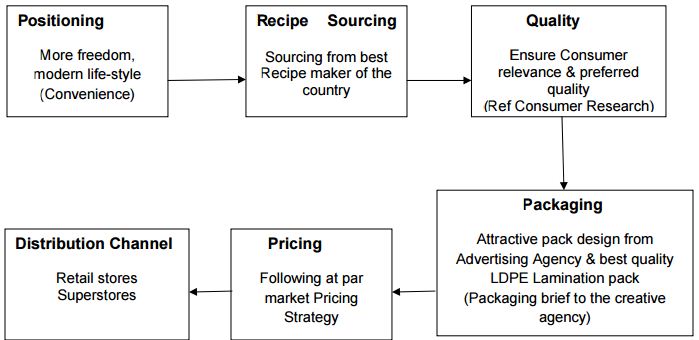
Research and customer feedback Criteria and formats:
Chicken Mix Masala‐
Chicken Mix Masala is an important ingredient which food lovers never forget to add in any non‐veg preparations, let it be curry or fried recipes or even biriyani. This masala has got strong flavor so consumer can use only 1 tsp for preparing any dish. People can use this masala to marinate Chicken along with other ingredients like salt, turmeric and red chili powder & prepare different items of chicken dishes.
Spice chicken materials: Pepper, turmeric, coriander, cumin, cinnamon, cardamom, anise, Black pepper, cardamom, jayatri, cloves, bay leaf, and saffron.
Vegetable mix masala
Mixed vegetables masala is a vegetarian side dish recipe. As the name suggests it involves various masala and the protein composition, enhanced by addition of wealthy foods. It is an easy to make recipe for the vegetarians and can be served with any other dishes.
Spice vegetable materials: Pepper, turmeric, coriander, cumin, cinnamon, cardamom, anise, black cumin, white mustard.
Preliminary technical evaluation
Following the market assessment is the technical evaluation. A technical pre‐ feasibility analysis should be completed, enabling us to establish R&D with defined steps, such as assessing associated risks, market and regulations alignment.
If we are in need of financial assistance, such as grants, loans, or tax incentives, this is the time to begin the application process. This ensures that the financial aspect of the project does not hinder the overall development
For preliminary technical evaluation, we called the Recipe maker to give us winning & differentiated recipe for each variant of Mix Spices such as Chicken Masala, Beef Curry Masala, Fish Masala & Vegetable Masala. Factory got the recipe with full description of all ingredients from the recipe maker. Based on our brief, factory (production) team adopted the recipe for commercial purpose, I and brand team has conducted survey on consumers based on the recipe before launching the product. And the main secret of the success is the recipe.
Market analysis and feasibility study‐
Based on our preliminary market evaluation, detailed market and feasibility studies are needed. This will help us to determine our positioning strategy, evaluating the cost of sale and the profit margin. As well, it is an important step in establishing a strategy to present the product to Consumers and promoters.
We had a detailed discussion with our sales team. As company FMCG division has separate product line & distribution line so that the line who sells basic spices (Turmeric, Chili, Coriander), is also responsible to sell those mix spices. And we follow our existing distribution strategy for Mix Spices.
Brand Maping:
Radhuni seems to have a strong cultural connection with the consumers; hence the brand enjoys a high recall. Consumers can also articulate the specifications and proposition of the brand
Pran also has decent recall and known to have high quality product sensorial. ACI, Rani and Arku has comparatively low recall, other than the own users, most are unaware of their offering and quality
Fresh Spice has very low salience and knowledge across other than its own users. Most consumers associate Fresh with oil, flour, water rather than spice.
Customer preference on basis of texture and flavor both fresh and other brands:
All Evaluation is basis on percentage variation (+) is above 50% and minus (‐) is below 50% ‐
First of all the minus (‐) symbol is the quality level below 50% and plus (+) symbol is quality of masala is above 50%,the standard level is 65%, but above 50% is good –Reference (http://www.bsti.gov.bd/cert_mark_accreditation/) 65% is the standard of quality maintenance level from BSTI.
(BANGLADESH STANDARDS AND TESTING INSTITUTION) in any consumer product quality margin.
Qualitative Research:
Radhuni Red Chili‐
In the pre face quality maintenance in the below 3 parameters except color all are in good percentage but post phase in a after test trial feedback is to lower the hotness means low spicy then previous and aroma glance lower, market leader brand (radhuni) have a extra advantage of sweet ingredients, consumers like the test of spice and sweetness mix up masala’s, market follower and other no brand are in average rate, lesser than 50% quality rate.
Low Hotness and High Color‐
In previous qualitative research all is about to reduce the spicy and the texture level high, but that’s why in this category as a new entrant factory (fresh mix masala) can’t do immediate change in spice and texture level, in the below graph, fresh parameter contains empty, and Radhuni as well decrease in all the parameter level, but maintain the same quality level, market followers and the other non brand’s are in same average quality.
Comparison with Pran Red Chili‐
Apart of comparison with pran red chili in the parameter context (color) the quality level is good enough except non‐brand, its quality is all average below. Hotness and intensity quality parameter both are quite good in terms of standard percentage rate comparison with Fresh, other two parameters are same quality standard in comparison with other three research variant (Market leader, market follower, non‐brand).
Low Hotness and Low Color
Here in same portion, for post variant Fresh variant is empty, comparison with Radhuni to have the same quality level to compete in the market, same quality level shown in the graph below.
Comments Discussion:
Good‐ In the variant of chicken mix masala after test of 3 Grade variants, the test was good, it was most of the consumer’s avg. comments, and for consumers the taste was familiar to them as they get in their houses, some sys the “Home Test”.
The percentage rate (Comments good) was above 80%. Overall Good‐ In the variant of Vegetable Mix Masala variant is not that much taste expected by the consumers, apart of quality, texture, taste in these three consecutive parameter consumer’s comments was neither good nor bad average.
Better‐ In the Variant of Beef Vuna Mix after having 1st Grade masala test the feedback was tremendous good, near about 80% percentage consumers feedback was absolutely brilliant and all three Grades results was good, the taste they got in the house or other places our masala mix ingredient was best then those.
Company concept, Business model and Business plan
This is the document that brings together all the research and preliminary work done so far, including a list of stakeholders who have offered their services. The business plan becomes a guide for the project, a document we refer to and use for information purposes.
We formed a business plan & model where we acquired all the information how we’ll launch Mix Spices in local market. We selected urban & metro city for target market of Mix Spices as we got directions about target market from our research.
Considering our product presence in the retail outlets across the country & upcoming promotion, we’ve projected sales for each variant of mix spices along with outlet contribution. Based on our business plan we do packaging, marketing plan, distribution strategy, quality control etc.
Prototype Development
Prototype is all about how a product should look from outside, that means the packaging, the outlook, of the product or the design, feasibility of that product. Once the idea development process is complete, it’s time to develop the product, or at least a sample or prototype of the product. Unless we have our own product development team, we will probably need the help of a food science and technology centre. Our business plan was helpful in this part of the process. The preliminary work that we have done will help the consultants gain a better understanding of our product.
Before we can start manufacturing our product, a prototype must be developed. Several decisions should be made at this point, including raw materials, packaging materials, prototype specifications, development of a formulation, lab procedures, identification of critical points, including QC Plan and it is maintained by Quality management system, costs of formulation, and packaging and labeling style.
The most important challenge was product development. At first, we developed recipe with the help of factory & we experimented the recipe on consumers. But we failed to get consumer acceptance.
Finally we called one of the best recipe makers in the country (Monitor Chef of the Year 2009) Mrs. Nusrat Khan, she is an recipe expert, she works for cooking related TV shows and cooking expertise where in need of, Monitor is a renowned
Cooking Magazine, she was the best and we choose her to provide us recipe for each variant. After that production team has adopted the recipe for commercial purpose and finally prototype has been developed.
Product testing and organization of production‐
Now that we know who our market is, how we want to position our product, what it’s going to cost, and more importantly, what our profit may be, it’s time to test the product. This involves quality assurance, quality control, process control, bench top trials, taste testing and pilot scale trials. Again, we will probably need the assistance of a food science and technology centre, which has all the necessary equipment and expertise to get the job done. This portion of the project took few months.
Likert Scaling Technique‐ A survey has been conducted by me collaboration with Brand team to get consumer feedback based .The survey was followed by not only our recipe but also competition. This is the 2nd and final research among Consumers before launching the product.
- In this Likert Scaling Technique Fresh Mix chicken masala was tremendous good from leading competitor Radhuni, cause in previous 3 sapling test basis on consumer’s suggestion we improved the quality, taste and other parameter, as a result before going for launch in the final test the feedback was better than previous.
- Fish Masala Variant was initiated from customers demand rate, it is seen from competitor brand product user percentage, it was also better than competitor.
- Beef Vuna Mix in this variant Radhuni was number one and still they are, Our Quality assurance team, I and Brand team tried hard but as a new entrant, it is quite difficult to match leading competitor, but in likert scale grade our brand gets good average.
- Vegetable mix was quite competitive in tase and liker scale result.
Scaling Technique:
Brand, QC, ME & Production along with Recipe Provider has worked on to develop product. When the proposed recipe has got winning position, we did all other functions to organize the production. Based on the recipe, we formed an expert panel for sourcing of raw materials & factory was asked for prototype specifications, development of formulation (blend ratio), lab procedures, and identification of critical points. And factory did their trial production. In the meantime costs of recipe and packaging have been finalized.
PRODUCT LAUNCHING
Commercialization
External product testing: The Consumer
Testing the product in the lab is an important step, but the one that really counts is product sample test with consumers. The consumer buys our product, eats our product, and hopefully, recommends our product; therefore, it’s important to get the consumer’s feedback on every aspect, including taste, appearance, texture, packaging and labeling. In addition, the information gathered through the consumer testing can become a complementary tool to our presentation strategy when we are trying to sell our product to the big food chains, brokers, buyers, and distributors.
When we launched our product, then we got a great feedback from our consumer’s on every aspect‐ including taste, appearance, texture & packaging of the product though a systematic procedure on regular basis. If we found any deviation about quality of the product then we’ll take necessary corrective actions with the help of production team.
Marketing Plan‐ Our idea has developed into a product that consumer have tested, and tested, and tested again. There is one last thing to do before we bring it to market: a Marketing Plan. For anyone who has taken “Introduction to Marketing”, this is the part that involves the marketing mix: product, positioning, place, price, promotion. These are key areas to plan for when we are preparing to launch a new product. All we know that a Marketing Plan covers marketing mix: product, place, price, promotion. These are key areas to plan for when we’ve prepared to launch FRESH Mix Spices.
SKU mix and pricing
Basically any consumer products in the market have different SKU variances, it is the size and shape of the product and this demand of size and shape comes from different place’s economy point of view, as an example Asia and Europe’s Customer demand is totally different from each region, in Asia the type of consumer demand in Bangladesh is price sensitive and small pack size but in Singapore the scenario is different and price comes in terms of shape.
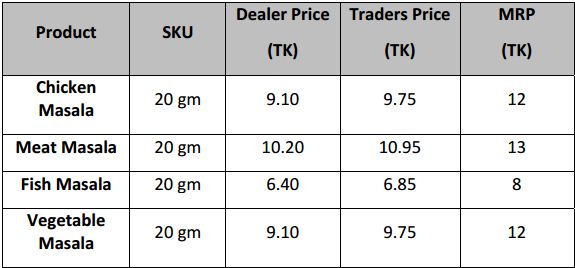
Trade Margin Analysis‐
From factory to end user a product basically goes by this way,
Factory Warehouse Distributor General Shop End User
Warehouse is basically maintained by Company, here company don’t give any margin, Distributors are tree for company’s Sales, in this portion company gives a percentage to them, it is called trade margin, and apart of this in area base, for different retailers on the basis of sales volume company give a smaller percentage of discount, this is all about Trade Margin.
Findings‐
- In the initial stage of development, select process, design, and other important aspects of a business plan require development procedures, budget, marketing plan and human resources plan.
- Then in 2nd stage we work on procedural works, implementation of development process, research criteria and customer feedback.
- After research product positioning, pricing, quality, and QC are done.
- After qualitative research we found some portion of the spice color is bit red comparing to Radhuni and less red comparing to Pran Mix Masala. Customers prefer medium range; suggestions are little bit spicier and color texture must be low.
- In extended formula discussions, it is rather accepted by the competitor product users, rather than Fresh regular users.
- From the research feedback, we found consumers prefer Grade 3 masala, because they tasted 3types of masala. Based on that we improved our product quality in 3 phases, which is time consuming and costly.
- The newest part is prototype development, it is all about the packaging process, and how the product looks outside, the product texture and its temperament.
- Likert Scaling technique used to get the consumer thinking’s before launching 4 masala variants.
- In Launching Stage, SKU mixing, trade margin analysis, channel focus, placement target, all used to get customers notification…
Recommendations
- Research Criteria: Though the research quantitative, it could be more than 1000 of customer engagement if it were online.
- Quality: After research we have improved our mix masala several times based on customer preferences. Competitors also provide better quality masala to compete with them we need the best , for that company needs more time ,expert engineer, quality controller to develop new type of masala.
- Launching Segment& Sales Criteria:
(a) In this segment 1st priority is Sales, especially retail sales, because retailers are sensitive about quantity and price of masala product.
(b) To gain more market share, company must emphasize on TVC’s, because people are attracted through television ads.
(c) Proper follow up with dealers and recruit sub dealers, to gain more market share.
(d) More and more sales promotion programs and have a strong monitoring team.
